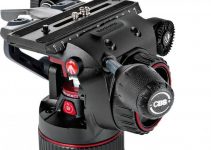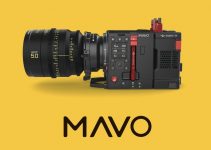It seems that the latest flagship smartphones continue to impress with their ever-evolving camera technology and overall performance. We have actually reached the point where more and more professionals and enthusiasts alike tend to put smartphones against the most expensive cinema cameras out there to compare their video capabilities.
With the progression of smartphone camera quality and feature set, one may wonder how a smartphone like the recently announced Samsung Galaxy S9 Plus, for instance, would compare to a high-end camera like the ARRI ALEXA Mini. I guess it won’t be very hard to sort things out as Potato Joe takes the two cameras out in several different shooting scenarios to see how much of a quality gap there is between the S9 Plus and the mighty ARRI ALEXA Mini.
For the purposes of this hilarious and entertaining comparison, the tests were broken down into several categories regarding dynamic range, sharpness, slow-motion capabilities, low-light quality as well as the way both devices handle fast motion.
Of course, it instantly becomes clear that the ALEXA Mini’s dynamic range is much greater than that of the S9 Plus. This is very prevalent in most of the shots, especially in those captured under direct sunlight.
In addition, the cinema camera was able to retain more details in the shadows, resulting in a smooth roll-off from light to dark. Unfortunately, the same can’t be said for the S9 Plus where the transition from highlights to shadows is sudden and very unpleasantly looking. Of course, dynamic range has always been a common caveat of smartphones, regardless of their manufacturer as it’s certainly an area where the smartphone technology still seriously falls behind.
Looking at the sharpness of the clips produced by both cameras, the S9 Plus turns out to be surprisingly sharper. This property of the S9’s camera stems from the fact that Samsung is notorious for adding a heavy amount of in-camera sharpening. While this brought out some details that weren’t entirely captured by the ALEXA Mini, Samsung’s sharpening algorithm can be perceived as too strong by some users.
In fact, Samsung’s over-sharpening begins to negatively affect the image when the frame is full of objects with defined edges, such as buildings. Because of the applied effect, you’ll notice a heavy amount of moiré present in the scene, which isn’t available in the ALEXA Mini footage.
Furthermore, both cameras are capable of recording slow-motion and can produce comparable results in that regard. The S9 Plus can shoot up to a whopping 960 frames per second, although only for a very limited amount of time. In addition, as you increase the frame rate, video quality starts to degrade dramatically. Despite the limitations, the outcome is quite spectacular as you’re provided with an incredibly smooth slow-motion video.
On the other hand, the ALEXA Mini is able to capture up to 200 frames per second continuously, meaning that you can shoot in the high frame rate option until you’ve run out of media storage. Thanks to the superior sensor and less limited software features, the slow-motion footage produced is still sharp and professional-looking.
While the expectations of which camera performs better in low-light are predictable, the footage of the S9 Plus still amazes. The ALEXA Mini is famed for being able to shoot in extremely dimmed conditions with excellent quality bokeh and details in the shadows, regardless of an absence of light. Even with a harsh key light, ALEXA’s roll-off is smooth and natural looking which in fact is another testament to the incredible dynamic range of the cinema camera.
When comparing the S9 Plus video, however, one may be surprised to see how well the smartphone holds up to the ALEXA. Despite the over-sharpening issues, the f/1.5 aperture of the smartphones’ rear camera lens does allow more light to enter the chip, contributing to the stellar low-light performance of the phone despite its significantly smaller sensor size compared to the ALEXA Mini.
Finally, both cameras were used to shoot a fast-moving motorcycle at night. This usually is a difficult scenario from a video standpoint. Due to the absence of light and heavy compression, it’s easy for lower-end cameras to falter with blocky, noisy video and drastic drops in detail.
While the ALEXA Mini’s footage came out just as expected (beautiful), the S9 Plus’ video held up pretty well. Of course, the phone had succumbed to the typical loss of sharpness/presence of noise ordeal with smartphones, but clever post-processing could definitely make the footage usable for certain applications.
The verdict
As Potato Jet concludes, there is indeed no contest between the two cameras. The ALEXA Mini is superior in every possible way – from dynamic range to low-light capabilities and everything in between. Yet, the whole point of this article was not to determine which camera performed better but instead aims to show how close smartphones can get to professional cinema cameras.
While you may not see the next Best Picture nominee shot on a Galaxy S9 Plus any time soon, the smartphone’s ability to stand up comparably to the ALEXA Mini proves that you don’t need the most expensive gear to make visually stunning motion pictures.
[source: Potato Jet]
Disclaimer: As an Amazon Associate partner and participant in B&H and Adorama Affiliate programmes, we earn a small comission from each purchase made through the affiliate links listed above at no additional cost to you.




